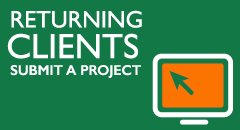FREQUENTLY ASKED QUESTIONS
Need More Information?
Click any question to see the answer. If your question does not appear below, please email Inline and we’ll reply promptly.
How much does a translation cost?
Text translations are priced on a per word basis. Rates will vary by language and subject matter. Translations of widely spoken Western European languages generally cost somewhat less than Asian languages.
Ad copy, taglines, slogans, and business cards, involve a combination of creative time, research, and translation skills, and are priced on an hourly basis.
What is your turnaround time for quotes?
Inline can respond to your request with a detailed proposal and fixed price quote within four hours of receipt of the complete materials in electronic format that need to be translated and/or typeset. In addition to an itemization of all fees, Inline quotes provide detailed project specifications.
What is your turnaround time for translations?
Turnaround time for translation jobs is based on the word count of the source language document and formatting requirements. Inline’s translators work at a rate of about 2,500 to 3,500 words per working day, which will vary depending on the complexity of the material being translated and languages involved. In addition, some time must be allowed for review and editing.
Do you charge the same to translate long [big] words and short [little] words?
Yes. Most translation assignments are priced on the basis of estimated or actual word counts. Likewise, translators and editors are paid on the same basis. In reality, word count is a proxy for professional time spent on a translation. Each translation has a wide variety of words—big ones, little ones, medium size ones, and so forth.
If you were to convert the typical charges for a translation project into hourly rates, you would find that the professional charges for translation services are relatively low compared to those of accountants, consultants, lawyers, and doctors, and seldom higher than those of plumbers, auto mechanics, and electricians.
Why do I have to pay twice for the translation of the same word?
The purchasers of translations are not buying a bushel basket of words, but rather they are paying a professional to place the right words in the right places, with the proper grammatical structures, which often involves gender changes as well as declensions of adjectives, articles, nouns, etc; complex verb conjugations, and so forth.
One could always purchase a foreign language dictionary to avoid paying twice for the same word, but you would still need to hire someone to create the right form of each word and then put them all together properly.
What are your “rush charges”?
Inline does not charge rush fees for quick turnaround projects. A translation is either physically possible within a given time frame or it’s not. Translation is labor intensive, and even the best translators work at the rate of 2,500 to 3,500 words per day. Throwing more money at translators does not increase their output. Whenever humanly possible, your Inline project manager will give you an expedited turnaround time.
Do you offer volume discounts?
Yes. For projects that consist of large blocks of repeated text, Inline uses translation memory which recycles a professional translator’s previous translation of the same text. Repeated text may occur within a single file and/or among several files of a large project. We use translation memory tools to identify these opportunities, which can lead to discounts ranging from 20% to 40%.
Inline also offers a special volume discount program to clients that purchase blocks of 15,000 words (or more) in a number of major languages on a monthly basis. Clients that commit to and purchase pre-set volumes in advance for a twelve month period will receive a 15% to 20% discount on Inline’s normal per word prices.
How do you handle translations that are targeted for audiences with lower levels of education than that of the original English text?
The reading level of Inline’s translations generally matches that of the English source text. However, when a client wishes to target individuals with lower levels of education, Inline’s project managers/editors and translators work closely to make sure the translation accommodates that need.
For requests involving Spanish, Inline translators and editors draw upon Inline’s proprietary list of Spanish high register/low register synonyms, which has been developed during the past 22 years. Use of these synonyms often results in lower reading levels without distorting the meaning of the target (Spanish) text as compared to the source (English) text.
When the register of the English source text is significantly above that of the target audience, and use of common high register/low register synonyms will not meet the needs of the target audience due to the complexity of the English source text, Inline works with clients to simplify the source English text before beginning translation. By lowering the register of the English text prior to translation, the client sees the exact message given to the target audience and we are able to certify that the translation accurately reflects the English document.
How can I display foreign-language text on my computer?
Most versions of Microsoft Windows and Microsoft Office will allow you to display foreign-language text. Many common European and Asian languages will work on your computer without any changes. Some languages may require installation of specialized fonts.
Word offers varying degrees of support for a wide variety of languages, including character-based languages such as Chinese and Japanese and languages written from right to left such as Arabic and Hebrew. You may need to enable editing of certain languages in Word by using the Office Language Settings Tool.
Even if you can’t configure your computer to display the translations, Inline can provide an Adobe Acrobat PDF file that you can view and print on almost any computer using Adobe Acrobat.
What automated tools do you use to enhance productivity and reduce costs?
Whenever cost justified and possible, Inline uses translation memory tools as well as their automated glossary managers.
Note that translation memory tools recycle a professional translator’s previous translation of the same text, which is not the same as “machine translation.” (For quality reasons, we do not use machine translation or edited output of machine translation.)
How do you explain the lower prices in the marketplace?
Given the nature of the translation industry, you will always find a wide range in rates. Literally tens of thousands of participants—including aspiring translators, one-person translation agencies, full-service translation companies, graduate students, part timers, retirees, job hunters, professional freelance translators, etc.—all advertise their services.
From the outside, it is not easy to differentiate among all these participants, other than price. If you have questions about a quote from another vendor, please contact Inline. We will provide a detailed analysis of the quotes and services you would actually be receiving.
Does your company have ISO or other certification?
Inline Translation Services was one of the first corporate members of the American Translators Association to fully comply with the ASTM International Standard Guide for Quality Assurance in Translation, which was approved on May 1, 2006.
ASTM International, originally known as the American Society for Testing and Materials (ASTM), is one of the largest voluntary standards development organizations in the world and a trusted source for technical standards for materials, products, systems, and services.
Does Inline translate personal documents such as birth certificates, academic transcripts, diplomas, marriage and divorce papers?
Our primary customer base includes large corporate and eleemosynary institutions. Unfortunately, Inline is not staffed to handle personal documents for individuals.
Why can’t I just take my chances with Google Translate?
Google Translate relies on a very large database of prior translations and statistical algorithms to determine a possible translation of a given text. It can be useful for the “gist” of the document in another language, but it can fail (sometimes dramatically) to convey the underlying meaning that the writer is trying to get across.
For serious documents, where you want to convey precise meaning without ambiguities, you should use the services of a professional human translator. Human translators excel at conveying the underlying meaning of the source text; machine translation falls far short on this dimension.
Can you review and certify a translation done by an employee or a volunteer?
Employee-provided and volunteer-provided translations are sometimes useful as reference material for in-company jargon and some technical terms. However, the professional time involved to edit a non-professionally-produced translation (which is billed on an hourly basis), generally exceeds the cost of a professional translation by a factor of three to one. We will advise you about the cost of both alternatives before undertaking such a request.
Employees in our company speak several languages. Why should I use a professional translator instead of having our staff do the translations?
Every employee already has a job to do in your organization. When they are tasked with translation, that means they aren’t doing the job they were hired to do. Whether it’s an office manager, a salesperson, a foreman, or a janitor, those jobs will be put on hold while the translation is completed, or the translation will wait while the normal demands of the job take precedence. Either way, part of the work suffers. Outsourcing the work to a professional translation company makes sense, because it allows workers to concentrate on what they do best.
Most employees also have little training or experience as translators. They seldom have an extensive library of reference materials and computer resources that can make all the difference in producing a quality translation. Some employee translators may not be native speakers of the language, or have never studied the language in depth to understand correct usage and grammar. There is a wide gulf between speaking a language and being able to translate.
Translation needs can often be unpredictable in many organizations. Hiring a professional translation service allows for rapid increases in capacity, without wasted downtime when no translations are needed. Language translation is our specialty at Inline, and we have the resources to complete large projects on time and under budget.
How do I request a quote?
New clients may request a quote by using this form. Returning clients can submit new projects here.


